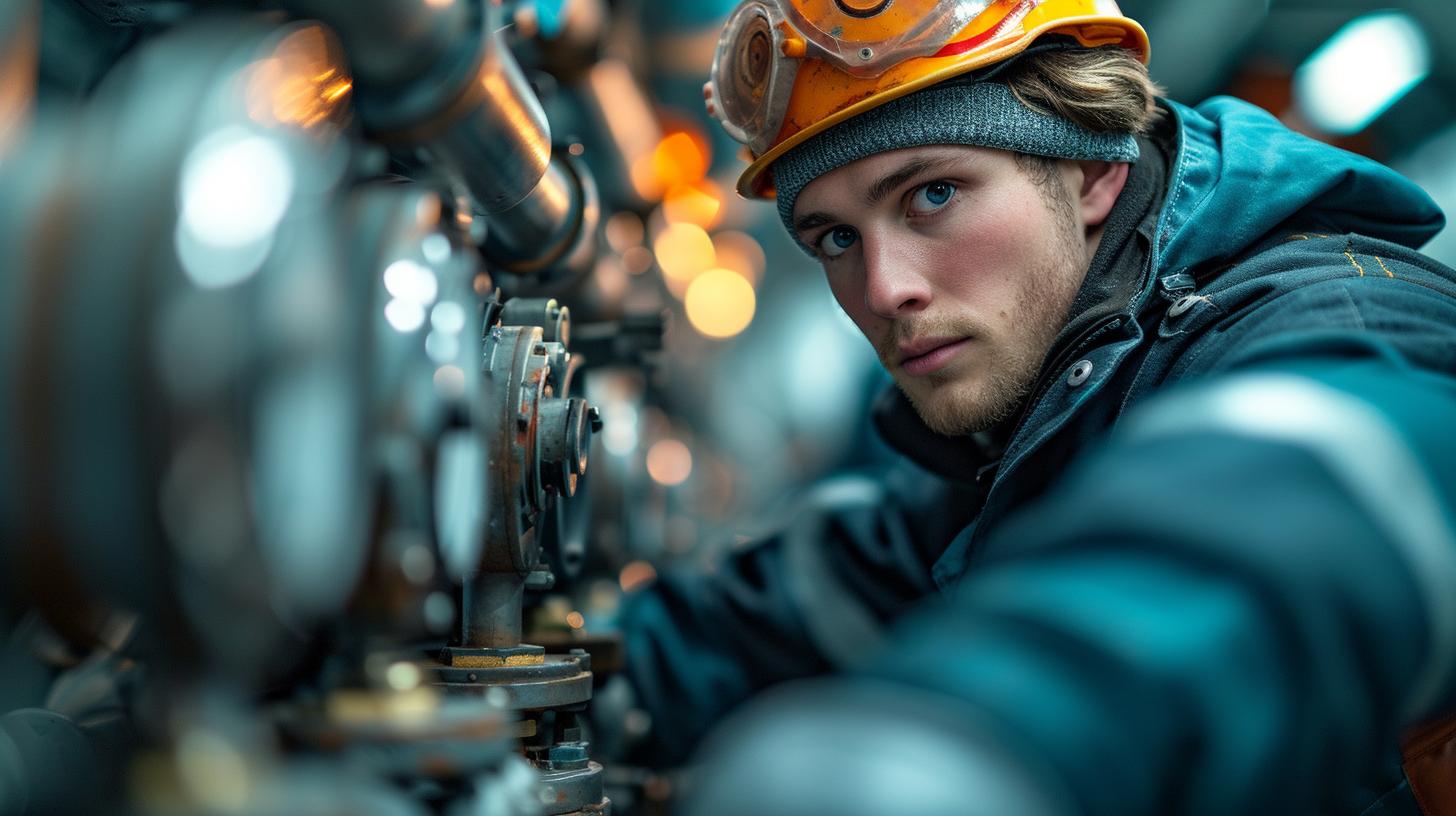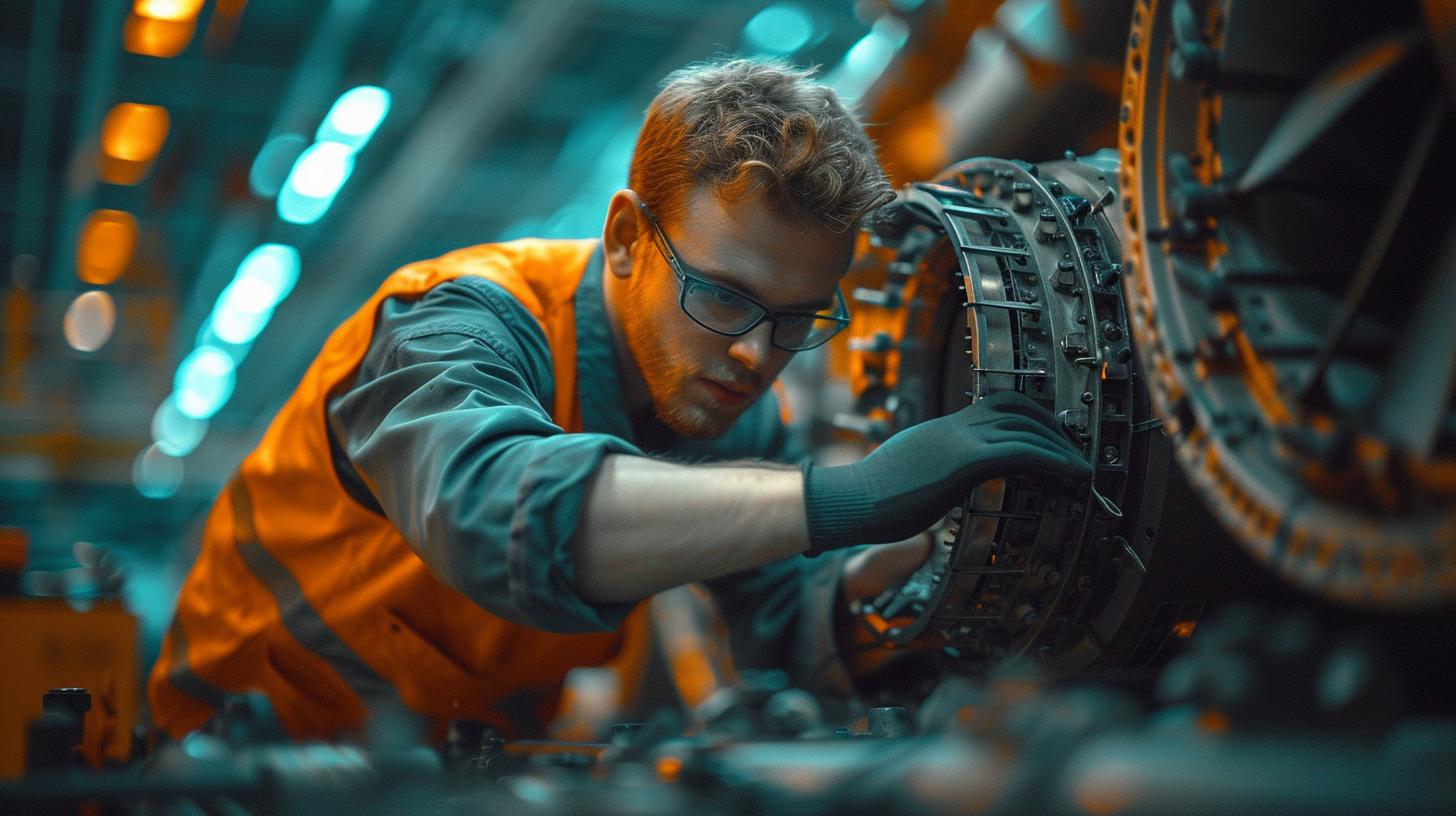The incredible advancement seen in the world of aviation is unprecedented. One aspect that contributes significantly to this efficiency are Airstart parts – often under emphasized, but undeniably pivotal constituent of our modern-day aircrafts. Not so much at the fore, but silently in the background, Airstart parts are consistently working round-the-clock to ensure smooth and safe flights.
Delving back into history, from the Wright brother’s first powered flight in 1903 to now most advanced stealth bombers and passenger airplanes, there’s been a dynamic evolution of the aviation landscape. The burgeoning technology has transformed air travel into a reliable mode of transportation accessible for millions worldwide. However, what remain obscured from regular parlance are intricate mechanisms embedded within these complex machines ensuring their optimal functionality. Among them lie our unsung heroes – airstart parts.
In simplest terms, Airstart system allows an aircraft engine to be started with compressed air when it’s tripped or faulty. Comprising valves, compressors and turbines functioning intricately together – these parts play a vital part in keeping aircrafts airborne without hitches.
This introductory section ventures into understanding how subtle yet significant is the role of these components that represent an impressive marvel of engineering. In forthcoming sections we will unmask this hidden protagonist contributing to make every successful flight deployment possible.
Understanding Airstart Parts
Airstart parts comprise the high-tech systems used in aircraft to initiate engine operations while in flight, as well as during cold weather conditions when the engine may need additional support for a restart. These systems are essentially small jet engines themselves, known as auxiliary power units (APU). Besides providing thrust, they also supply power needed for ground operations before takeoff, such as starting up other integral equipment like cockpit display systems and air conditioning units.
Delving further into their composition, airstart parts include starter motors, turbines, rotors and other essential components that together help to propel an aircraft. High-strength alloys generally constitute these elements due to their ability to withstand high speed rotations and handle the heat generated by friction forces. Furthermore, several of these components have intricate designs employing precision engineering principles ensuring reliable operation under stringent aviation industry standards.
In spite of their central role in aviation processes, airstart parts often remain unsung heroes. Their contribution goes beyond simply initiating or restarting aircraft engines mid-flight-a feature that can be a lifesaver during emergencies where primary engine failure is experienced. Airstart systems also derive power from the fuel already onboard an aircraft eliminating the necessity of additional energy sources-a factor contributory to weight reduction hence increased efficiency.
| Airstart Parts | Function |
|---|---|
| Starter Motors | Helps initiate the procedure of starting an airplane’s engine. |
| Turbines | They use destructive interference to reduce noise levels inside and outside of the plane. |
| Rotors | Emit motor power from one component to another via rotational movement. |
The Critical Role of Airstart Parts in Modern Aviation
Airstart parts play a pivotal role in the modern aviation industry, thanks to their critical functionality within an aircraft. These components, which primarily include turbine engines and related systems, help streamline takeoff procedures and ensure the smooth operation of aircraft while airborne.
Central to this process is the airstart engine’s ability to power up or restart an aircraft’s main engine in mid-flight if necessary. This specific function significantly boosts safety margins, making airstart parts indispensable elements in contemporary aviation operations.

Elucidating further on their prime roles reveals interesting facets of these mostly overlooked but highly essential components. During the flight takeoff phase, a failed motor start could cause considerable delays or even potential risk of shutdowns.
Here is where airstart parts come into play triumphantly: by providing a rapid secondary source of power that can swiftly get the engines running again, thereby largely negating such adversities. The presence of airstarts can even make key differences during in-air emergencies when time is sharply critical – for instance, if all onboard engines fail simultaneously due to unforeseen circumstances, airstarts can kickstart them back alive almost instantaneously.
Moreover, it’s noteworthy that airstart parts become particularly crucial over high-altitude flights over inhospitable terrains such as oceans or polar zones where immediate landing capabilities can be drastically limited. In such cases, in-flight relighting becomes imperative for continued flight safety and maintaining altitudinal stability.
Aircraft equipped with reliable airstarts raise the operating efficiency by providing additional peace-of-mind on long-haul flights across remote areas. Considering these parameters rightly entitles the humble airstart parts as pivotal game-changers defining modern aviation practices today – ones equipped to promptly handle high-stake situations that are quite commonplace within this dynamic industry vertical.
The Interplay Between Airstart Parts and Aircraft Safety
Aircraft safety is paramount in aviation, and airstart parts are instrumental in ensuring this. An aircraft’s performance and safety depend heavily on engines starting properly at high altitudes or in emergency situations, a task assigned to the airstart system. When an aircraft’s main engines fail or need restarting mid-flight, these systems play a crucial role.
Airstart parts must meet stringent standards to ensure they perform optimally under highly pressurized conditions. Safety precautions during manufacturing include rigorous testing to withstand extreme temperatures and pressures.
For instance, take the pneumatic motor in an airstart system – it needs proper lubrication for safe, smooth operation. The failure of this crucial element stemming from inadequate lubrication may lead to engine lock-up issues mid-air, thus compromising passenger safety. Therefore, it is not only necessary to manufacture robust airstart parts but also follow strict maintenance protocols.
- Lubricant checks: Regular checks ensure that there is no degradation of quality or shortages of lubricants affecting motor function.
- Leak detection: Regular canal pressure tests detect any leaks which can compromise the efficiency and safety of air start systems.
- Rotational speed checks: Testing the rotational speed of the motor guarantees its ability to ignite the engine efficiently without causing undue stress on components.
Safety standards for airstart parts are dictated by civil aviation regulatory bodies worldwide. These guidelines demand precise production methods for all components involved in building an airstart system and detail quality control measures to be adhered strictly post-production.
- Material Quality: Raw materials used should display resistance towards corrosion and strength at high temperatures; typically alloys with high nickel content are chosen.
- Safety Valves: All valves across the assembly should be foolproof and capable of automatically shutting down systems if abnormal pressure or temperature conditions are detected.
- Cattle Tube Failure Safeguards: Measures should be in place to safely vent pressurized air without harm to personnel or property if a failure occurs in the cattle tube.
In sum, airstart parts contribute significantly to aircraft safety by enabling engine restarts at critical times. By sticking to stringent manufacturing and maintenance standards, aviation continues to put safety first.

Efficient Air Travel
Contributions to Flight Efficiency and Reliability
The ability of aircraft to perform efficient flights plays a huge part in satisfying passenger needs and thereby determining the success of the aviation industry. In considering all aspects that improve flight efficiency, Airstart parts are unquestionably one of the main contributors.
Airstart systems, usually consisting of high-powered turbines and other auxiliary components, work together to start the main engines of an aircraft. They ensure soft starts for graceful engine acceleration, protecting integral engine components from potential strain or damage caused by abrupt starting.
This smooth operation is essential in avoiding unnecessary fuel consumption, reducing engine wear-and-tear, and increasing overall reliability. The ability of Airstart parts to enable these operational efficiencies means lesser downtime for maintenance checks or replacements, resulting in shorter turnaround times between flights. Additionally, this reduces unplanned engine failures during a flight which can result in dangerous situations or crises.
Real-Life Scenarios: The Role of Airstart Parts
A notable example that demonstrates the important role of airstart parts took place on various occasions where commercial airplanes had to restart their engines mid-flight. In such potentially disastrous scenarios, having robust airstart systems is critical as they provide an assured technique for re-starting an airplane’s main engines under extreme conditions like high altitudes or excruciating cold temperatures.
Without properly functioning airstart parts, restarting would have been near impossible at such heights with very limited options left for pilots.
In another case study; airlines in regions with harsh winters rely heavily on airstarts not just for initiating an engine start but also using their bleed air systems to push hot compressed air into wing leading edges as well as tail surfaces for ice removal before take-off. This “icing” can create enough drag to affect aerodynamics significantly or worse freeze moving parts altogether – thus making it extremely risky if not managed appropriately.
Resolving Unexpected Operational Challenges
Unforeseen technical glitches or environment-caused challenges can significantly impair the flight operations. With modern aircraft reliant on several automated systems, lack of sufficient onboard power can lead to an undesired loss of control. In such instances, Airstart parts prove their viability beyond just engine starts.
If the main engines have failed and the generators are not functioning, airstarts continue to supply electrical power to onboard systems preventing complete blackout situations. An operational airstart system allows pilots to utilize key flight control and communication systems until they can restart the main engines again. This goes a long way in maintaining overall onboard and flight system stability even amidst unforeseen challenges, thereby playing a critical role in preserving aircraft safety during emergencies.
Conclusion
In conclusion, the role of airstart parts in modern aviation cannot be understated. They serve as the unsung heroes within any aircraft, ensuring not just efficiency and reliability in air travel but contributing significantly to flight safety as well. While on the surface they may appear simple and uncomplicated, it is this very functionality that makes them indispensable to the major advances we are presently witnessing in the aviation industry.
Looking towards the future, there’s no doubt that airstart parts will continue to play a fundamental role in the evolution of aviation industry. Advances in technology and engineering will undoubtedly lead to enhanced performance and efficiency of these parts, ultimately leading to safer, more reliable air travel for millions of passengers worldwide. This continued emphasis on innovation ensures that although these components stay behind-the-scenes for now, their value can’t go unnoticed for too long.

The narrative surrounding airstart parts may very well change from being ‘the unsung heroes’ to ‘the pillars of aviation.’ As more people become aware of their significance, we hope this breeds an increased respect for those who design and maintain them.
Aerospace engineers have always worked with a dedication focused on creating an ever-increasing safe environment for air travel; this passion undoubtedly extends into every single airstart component within an airplane engine. Indeed, understanding the critical function of each part gives us all a greater appreciation for what it takes to keep our skies friendly.
Frequently Asked Questions
What Is Airstart for Airplane?
An Airstart is a device used to start an aircraft’s engines when the onboard battery isn’t sufficient. Typically, they’re most frequently used for commercial airplanes.
These machines are portable and can be carted around an airfield or stored in strategic locations for quick use when needed, such as during extremely cold weather when plane batteries tend to struggle.
What Is the Difference Between the Ground Power Unit and the Air Start Unit?
The difference between a Ground Power Unit (GPU) and an Air Start Unit (ASU) lies largely in their respective functions. A GPU supplies electric power to an airplane that is on the ground with its engines turned off, allowing all electrical systems within the aircraft to operate without exhausting the plane’s own power systems.
ASU, on the other hand, is primarily responsible for supplying compressed air into a jet engine to initiate it into starting up.
What Are the 5 Major Structural Parts of the Aircraft?
There are five major structural parts of an aircraft: the fuselage, wings, empennage, landing gear, and powerplant. The fuselage is the central body section which holds crew and passengers or cargo.
Wings provide lift and contain fuel tanks and flaps for flight control purposes; the empennage includes the tail assembly components necessary for stability in flight; landing gear provides support while taxiing or parking; lastly, power plant houses everything related to propulsion including engines and propellers.
What Are the Body Parts of the Airplane Called?
The main body parts of an airplane are called Fuselage (the main structure or body), Wings (left wing and right wing), Empennage (tail section), Landing Gear(Wheels & struts), and Power Plant(Engines). Additionally, there are many smaller ancillary parts that play significant roles in aircraft operation like cockpit controls, hydraulic systems among others.
Why Do Some Planes Need an Airstart?
Some planes need an airstart because their onboard battery alone cannot generate sufficient energy required to get their engines running especially under certain conditions such as extreme cold weather conditions where batteries struggle or there may be instances where planes’ own energy systems may be compromised.
Why Do Planes Need Airstart?
Planes require an airstart to kickstart their engines when the onboard battery alone is not powerful enough to get the propulsion systems operational. This could be due to a variety of reasons including weather conditions or issues with the on-board battery. The airstart system provides necessary amounts of compressed air that are vital in starting up a jet engine.
What Does an Airstart Do?
An Airstart aids in initiating the start up of an aircraft’s engine by supplying high-pressure air into it. This method comes into play when the plane does not have sufficient battery power for engine ignition, particularly large commercial airplanes and especially during cold weather situations.
What Is the Air Starter on a Semi Truck?
Just like with airplanes, an air starter on a semi-truck is used for starting up the vehicle’s engine, specifically larger diesel engines. These units use compressed air to generate torque required for getting all moving parts within an engine functioning together successfully at desired speeds, thereby initiating a successful startup sequence.
